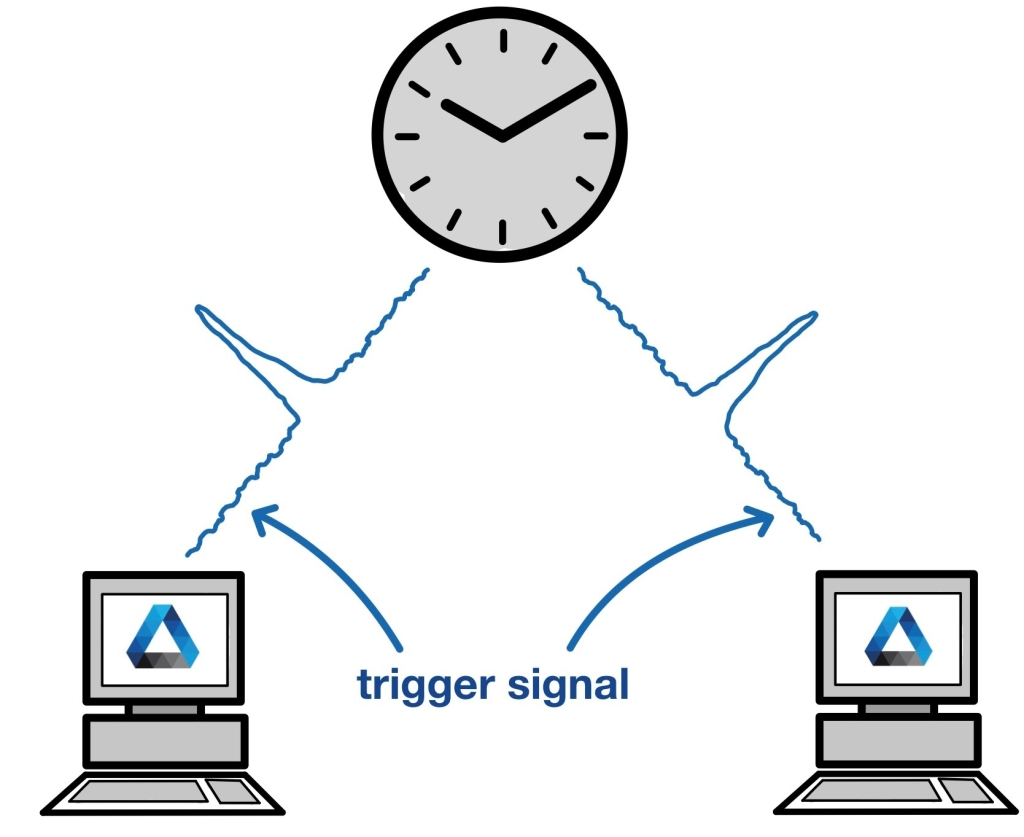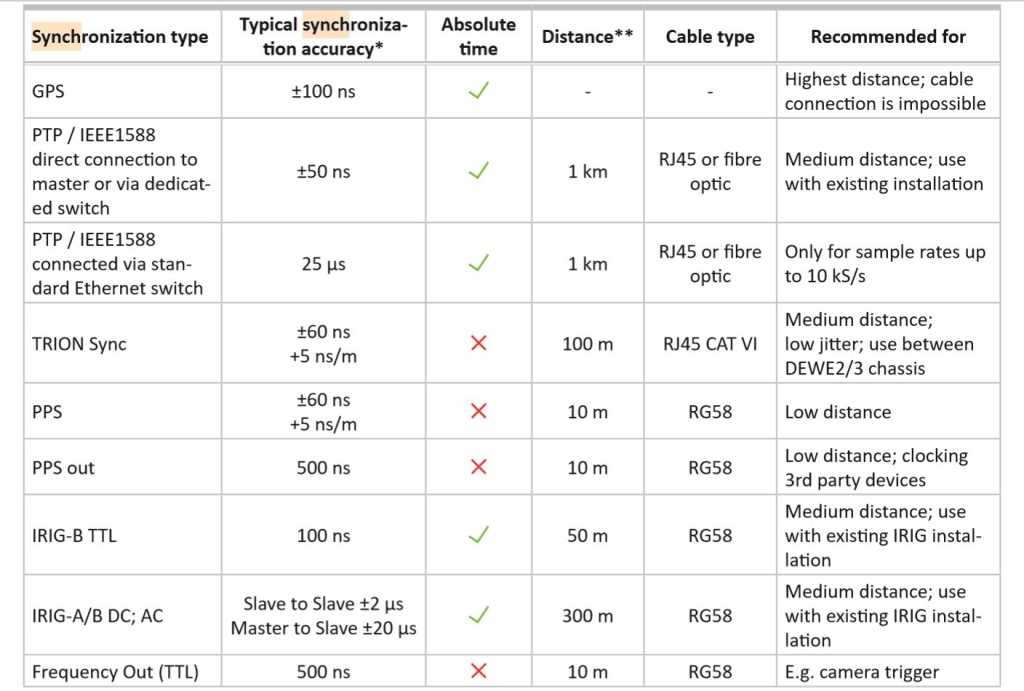Synchronization

In test and measurement technology, the term synchronization refers to the alignment of processes in terms of time. When two measuring devices run synchronously, the clocks in both devices run the same – no clock is lagging behind or running ahead. But why is synchronization important and how is it realized in practice?
The consequences of missing synchronization
Imagine your clock is running 10 minutes late, but you are not aware of it. What are the consequences for you? Maybe you miss your train, or you are regularly late for work. If your clock were synchronous with a clock running correctly, you would not have these problems.
These problems are not only due to the fact that two clocks do not indicate the same time. Clocks that we use in everyday life are also inaccurate, they drift. Therefore, one has to constantly adjust them to the world time in order not to drift too far away from it. To achieve this, most modern clocks regularly synchronize with more accurate clocks (e.g. atomic clocks). The same applies to measurement technology. If measuring devices do not run synchronously, this can lead to many problems.
Some problems that can occur in test and measurement technology when there is a lack of synchronization are:
- Data recorded by different measuring devices does not line up or even drifts apart.
- The start of the measurement does not take place at the same time for different devices. This means that one may miss an important event, because it happened to early.
- Many analysis methods, such as the Fast Fourier Transform (FFT), require an accurate time measurement. If the time measurement is also inaccurate due to a lack of synchronization, this can lead to inaccurate analysis results.
How to achieve synchronization
An obvious and simple way to synchronize measurement devices is to use a trigger signal. The trigger signal can be sent from an external source, such as an atomic clock, and repeats at regular intervals. Since the individual measuring devices receive a synchronization signal at regular intervals, it is possible to avoid the time drift of different clocks (due to their inaccuracies).

Synchronization via a trigger signal from clock
But the problem of the simple trigger method is obvious: An absolute time indication (e.g. showing the world time UTC) is not possible, because we do not know the travel time of the trigger signal to the individual measuring devices. For instance, one measuring device can be 100 m further away from the origin of the trigger than the other. As a result, the trigger signal also takes longer to reach one measuring device than the other.
To avoid this, the so-called Precision Time Protocol (PTP) was introduced. Here, the Grandmaster Clock, a very precise clock, sends out the trigger signal at regular intervals. The other measuring instruments react to this signal and send their own time signal back to the Grandmaster Clock. Thus, by communication from both clocks, one can calculate the propagation time of the trigger signal, and account for it. Therefore, the hardware used is the only source of error. The more accurate the hardware, the more accurate the time synchronization.
To use the Precision Time Protocol, however, you need a wired connection. If you want to synchronize clocks over long distances or over rough terrain, GPS synchronization is suitable. You can read more about this in our blogpost about satellite navigation.
There are a number of other techniques for synchronizing measurement devices, each with its own advantages and disadvantages. Further examples are IRIG or PPS.
Possibilities in modern measurement technology
We at DEWETRON specialize in the development and manufacture of high-precision test and measurement technology. For our measuring instruments we offer a wide range of possibilities for synchronization.
For long distances, where a cable connection is not possible, you can achieve an accuracy of ±100 ns via GPS. If a cable connection is possible, the synchronization can be carried out by PTP according to IEEE1588. This allows you to achieve accuracies of up to ±50 ns.
You can find an overview of all synchronization types DEWETRON offers in the following list:

All our measurement systems have a modular and flexible design. For example, you can easily add GPS synchronization to your system using our TRION-TIMING-V3 cards. Many other options and modules are available. We also distribute our own OXYGEN software, which is ideal for data processing and evaluation. More information about all our products can be found on the DEWETRON website. We also regularly publish whitepapers and video tutorials on our homepage and are active on Twitter or LinkedIn.





